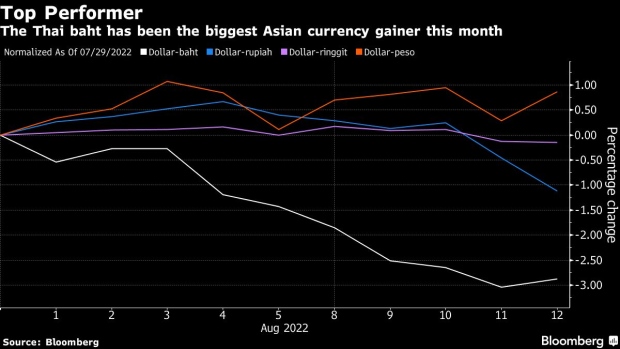During the trading session on Wednesday, September 27, 2023, Asian currency markets went through a wide range of complicated moves against the US dollar (USD). This because investors worried about the US Federal Reserve’s (The Fed) monetary policy stance.
At exactly 9:22 AM WIB, data from Refinitiv showed that different Asian currencies were both strong and weak. Notably, the Malaysian ringgit lost the most value each day, falling by 0.32%. The Thai baht lost just 0.16%, which was very close behind.
The way the Indonesian rupiah did was especially interesting. It started the business day with a small gain of 0.06% against the US dollar, which made the exchange rate Rp 15,475/USD. But in just a few minutes, it crossed a major psychological barrier and briefly touched Rp 15,511/USD. The rupiah had been weaker since January 10, 2023, a period of almost eight months.
How The Fed Acts Like a Hawk
The main reason for these changes in currency is that the Federal Reserve seems to be “hawkish,” especially when it comes to the end of 2023. The Chairman of the Federal Reserve, Jerome Powell, made it clear that a “hawkish” stance was becoming more likely during the Federal Open Meeting Committee (FOMC) meeting in September 2023.
The Fed’s “hawkish” attitude is based on the fact that the US wants inflation to be 2%. This is important to note: the country’s yearly inflation rate rose to 3.7% in August 2023, higher than the 3.2% YoY inflation rate recorded the previous month.
Additionally, Jerome Powell made it clear that the central bank would not be afraid to raise interest rates or, at the very least, keep them high if inflation stays above the lower trend for a long time.
What Investors Expect to These Currency Condition
Investors are still waiting with bated breath for clues about what will happen with interest rates in the future. They pay close attention to what Fed officials say in public and can’t wait for important economic data to come out that will show them what’s going on with the US economy.
As part of this economic data release, data from August 2023 about sales for durable goods in the US will be carefully looked over. It is important to note that in July 2023, new sales for durable goods made in the US dropped by a significant 5.2%. This drop came after growth of 4.4% in June that was later changed. Market expectations had called for a 4.0% drop, but this drop was much bigger than that.
What it Means for Currency in Indonesia
In addition to the bigger picture, Indonesia’s currency, the rupiah, affected by things that unique to that country. Head of the Economic and Monetary Policy Department at Bank Indonesia (BI), Edi Susianto, told CNBC Indonesia that the rupiah’s fall is caused by more than just global factors. He said that bonus return is also a factor. There will be more demand for the US dollar at the end of this month, which will put more pressure on the rupiah’s exchange rate.
An economist at Bahana Sekuritas Putera named Satria Sambijantoro went into more detail. He saying that dividends will paid out every year in May and September 2023.
“Earnings for the middle of the year paid out in May, and earnings for the whole year paid out in September.”
One to two months before dividends paid out, there a lot of interest in the US dollar. This event is a major reason why the rupiah is continuing to lose value, in addition to the overall changes in global mood.
However, BI offers an encouraging view by saying that this stage of decline is temporary. The rupiah is likely to do better in the near future as Indonesia’s internal economic factors receive more support.
